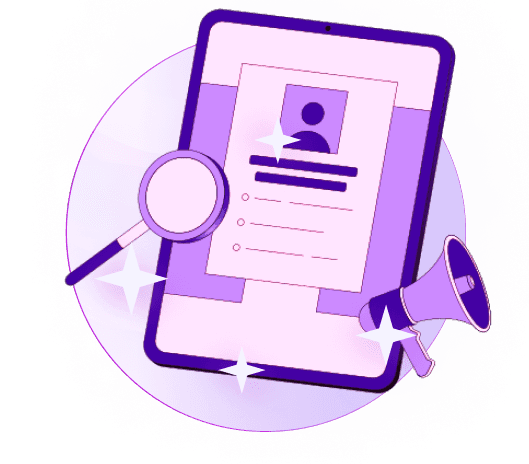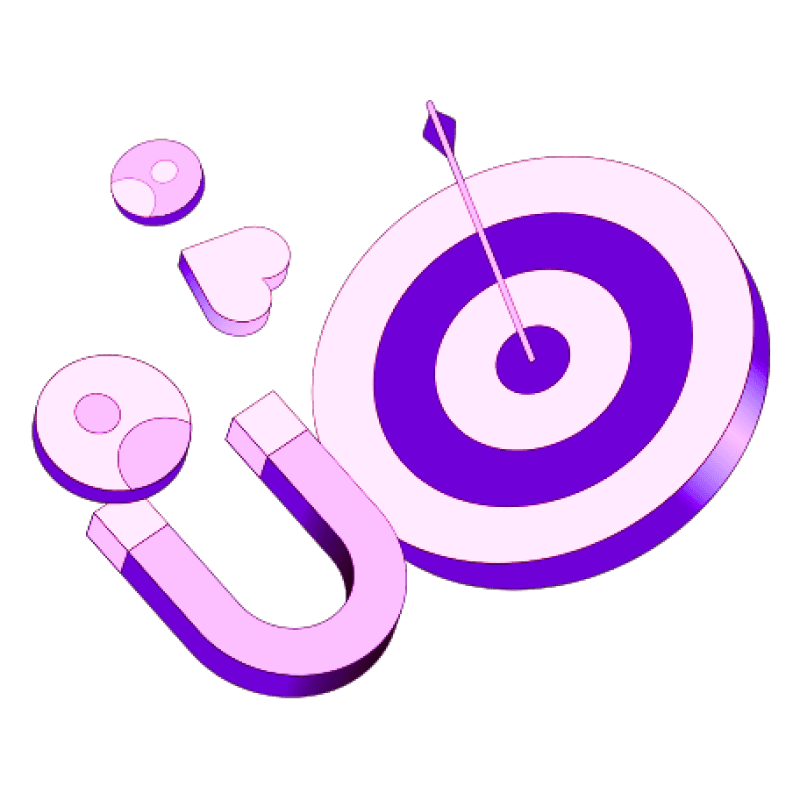Blogs
Articles

What is AI Sales Enablement?
A shocking reality exists in sales today - representatives spend only 28% of their time selling.
The numbers tell a compelling story, yet many organizations find it challenging to make AI work for sales enablement. We created this complete guide to help you build a powerful AI sales enablement system that delivers results, whether you're starting your experience or looking to boost your current processes.
This piece walks you through AI applications in sales, the best AI sales enablement tools, and practical strategies. You'll learn to build an AI-powered sales enablement platform that optimizes your team's efficiency and effectiveness.
What is AI Sales Enablement?
AI sales enablement combines artificial intelligence technology with traditional sales processes and tools. This strategic use of AI helps improve, streamline, and optimize sales functions across the board.
Traditional sales enablement gives sales teams content, tools, and information. AI sales enablement builds on this foundation by adding machine learning algorithms, natural language processing, and predictive analytics. These additions make sales processes smarter and more efficient.
The idea behind AI sales enablement is simple. Advanced algorithms automate routine tasks and give practical insights from big amounts of data. Sales professionals get live assistance that lets them concentrate on relationship building and deal closing.
Today's AI sales enablement platforms come with several key features:
Automated data entry and CRM updates
Intelligent content recommendations based on prospect characteristics
Live coaching during sales conversations
Predictive lead scoring and opportunity prioritization
Tailored outreach at scale
Benefits of AI Sales Enablement
AI sales enablement brings many clear benefits to modern sales teams.
By a lot increased productivity stands out as the main goal. Sales teams that use AI-powered tools save 21% of time on admin work, so they can spend more time selling. Their meeting scheduling becomes 27% more effective too.
AI sales enablement helps companies grow revenue quickly. Companies using these technologies see:
4.9% increase in win rates
8.1% improvement in quota attainment
10.6% growth in deal size
14.2% reduction in sales cycle length
Sales forecasting becomes much more accurate with AI sales enablement. Teams using AI are 40% more accurate in their forecasts than those using old methods. On top of that, it helps sales teams use 43% more content because they always have the right materials ready for each sales situation.
AI systems analyze prospect data to create 37% more tailored interactions that lead to better conversion rates. New team members become productive faster too - AI-powered onboarding cuts their learning time by 34%.
Key Components of AI Sales Enablement
AI sales enablement systems are built on three key components that work together to improve sales performance. Sales teams must understand these elements to implement them successfully.
Workflow Automation
AI sales enablement simplifies operations by automating everyday tasks. The system handles data entry, schedules meetings, and manages follow-up communications automatically. The tools capture and organize customer's interactions across channels and create detailed profiles without manual input.
AI tools generate customized outreach materials and qualify leads based on behavior patterns instead of fixed criteria. Sales representatives save 5-7 hours every week and can focus on building relationships with clients.
Data-Driven Insights
AI sales enablement's intelligence component turns raw data into applicable information. The system analyzes thousands of sales interactions and identifies patterns that create successful outcomes.
Modern platforms can predict which prospects will likely convert. They forecast deal closure timelines with 40% greater accuracy than traditional methods. The system recommends the best next steps based on past performance. Sales teams can prioritize their efforts based on analytical insights rather than gut feelings.
Customization and Scalability
AI sales enablement adapts to your business's specific needs and grows with your organization. The system learns from interactions after its original configuration matches your unique sales processes. It becomes more in tune with your team's approach over time.
A system that helps a ten-person team can serve hundreds of representatives without losing performance. This flexibility extends to integration features. The system connects with your existing CRM systems, communication platforms, and content repositories to create a unified sales technology ecosystem.
These three components are the foundations of successful AI sales enablement. They automate workflows to save time, create insights to guide decisions, and provide the flexibility to evolve with your organization's needs.
6 Core Use Cases of AI in Sales Enablement
Let's get into six powerful ways sales teams are using AI technology to get measurable results.
1. Keeping content accurate and available
AI revolutionizes content management by automatically tagging, categorizing, and updating sales materials. Your representatives will always have the most relevant and current resources without wasting time searching through folders or drives. AI can analyze which content pieces get the highest engagement rates and automatically recommend them to reps based on their specific sales scenarios.
2. Reinforcing onboarding with up-to-the-minute nudges
AI-powered systems provide contextual guidance right when it's needed instead of overwhelming new hires with information. These "just-in-time" prompts give specific suggestions during calls, email drafting, or objection handling. Every customer interaction becomes a chance to learn. This method cuts ramp-up time by 34% compared to traditional onboarding approaches.
3. Standardizing talk tracks and definitions
AI helps keep messaging consistent by providing standardized definitions, talk tracks, and product positioning throughout the sales organization. AI quickly updates all relevant materials and notifies reps when product details change. This eliminates any risk of outdated information reaching customers.
4. Delivering instant answers during calls
AI listens during live sales conversations and provides quick information about products, pricing, competitive differentiators, and objection handling strategies. Reps can tap into institutional knowledge without disrupting their natural conversation flow.
5. Scaling coaching with conversation analysis
AI systems analyze sales calls to spot patterns that lead to success. These platforms look at factors like talk-to-listen ratios, question frequency, and specific language patterns. They provide customized coaching recommendations based on actual performance data rather than subjective feedback.
6. Capturing and sharing institutional knowledge
The most valuable aspect is how AI catalogs and makes your entire sales organization's collective wisdom searchable. This keeps critical knowledge intact when experienced team members leave and gives everyone access to winning strategies that might otherwise stay with top performers.
How to Build Your AI Sales Enablement System
Building an AI sales enablement system that works needs a step-by-step plan. These five steps will help you create a solution that fits your team's needs perfectly.
Step 1: Audit your current enablement process
Start by looking at your existing sales processes. Write down everything about your content management systems, training procedures, and sales tools. Spot the areas where sales reps waste time on tasks that aren't selling. This audit becomes your starting point to measure future improvements and shows exactly where AI can help the most.
Step 2: Identify high-impact AI use cases
Your audit results will help you pick areas where AI can add value right away. Pick specific problems to solve instead of trying to use AI everywhere. To cite an instance, if your team can't find content easily, start with AI-powered content suggestions before you move to conversation intelligence.
Step 3: Choose the right AI sales enablement platform
Pick a platform that matches your needs. Think over solutions from providers like Persana that offer AI sales enablement features built for your industry and sales process. Review each platform's ability to work with other tools, how easy it is to use, and how well it can grow with you.
Step 4: Integrate AI into daily workflows
The best systems put AI tools right into your team's existing work process. Add AI features to the tools your team uses every day instead of creating new processes. Your team won't need to jump between different apps, which makes them more likely to use the new tools.
Step 5: Train your team and gather feedback
Start with practical training that shows real uses instead of technical details. Create ways for reps to share what they think. The best ideas often come from people using the system daily. Use this feedback to make your system better as your team's needs change.
Choosing the Right Tools and Measuring Success
Your team's performance depends on picking the right AI sales enablement tools. A careful assessment and tracking system will help you get the most from your investment.
Top AI sales enablement tools to think about
The market has many powerful AI sales enablement platforms that help with different parts of the sales process. You need solutions that give you conversation intelligence to analyze sales calls. Look for content management systems with AI-powered suggestions and coaching tools that give tailored guidance. The best platform will merge naturally with your current tech stack.
Teams looking for a detailed solution should check out Persana.ai. It has AI features you can customize specifically for sales enablement.
How to assess tools using a scoring grid
A scoring grid helps you measure potential AI sales enablement tools based on what you need. List your must-haves in the left column. Give each item a weight that matches how important it is to your company.
Score each vendor on these items using a scale from 1-5. Multiply each score by its weight. The final scores will show you exactly how each option stacks up, taking away any personal bias.
Your assessment should look at:
How well it works with your current systems
How easy it is to set up and use
Ways to customize it for your sales process
Security and compliance features
What people say about the vendor and their support
Tracking ROI and performance metrics
Watch both early and late indicators to see how well your AI sales enablement works. Early signs include how many people use it, time saved on paperwork, and better content use. Later results show up in shorter sales cycles, more wins, and higher revenue.
Start by recording your current numbers. Then check how things improve every few months. This method helps you see exactly what your AI investment brings and lets you fine-tune things to get better results.
Conclusion
AI sales enablement is pioneering changes in how sales teams operate today. Our research shows sales representatives spend only 28% of their time on actual selling activities, which creates a significant challenge for organizations.
The results are clear. Teams that accept new ideas in AI see better productivity, shorter sales cycles and higher revenue growth. AI complements human sales professionals and enhances their capabilities through workflow automation, analytical insights, and adaptable features that evolve with organizations.
Creating an effective AI sales enablement system needs careful planning. Start with a full picture of your current processes and identify specific use cases that match your team's challenges. Choose a platform that naturally fits into your current processes and meets your specific needs.

Create Your Free Persana Account Today
Join 5000+ GTM leaders who are using Persana for their outbound needs.
How Persana increases your sales results
One of the most effective ways to ensure sales cycle consistency is by using AI-driven automation. A solution like Persana, and its AI SDR - Nia, helps you streamline significant parts of your sales process, including prospecting, outreach personalization, and follow-up.



